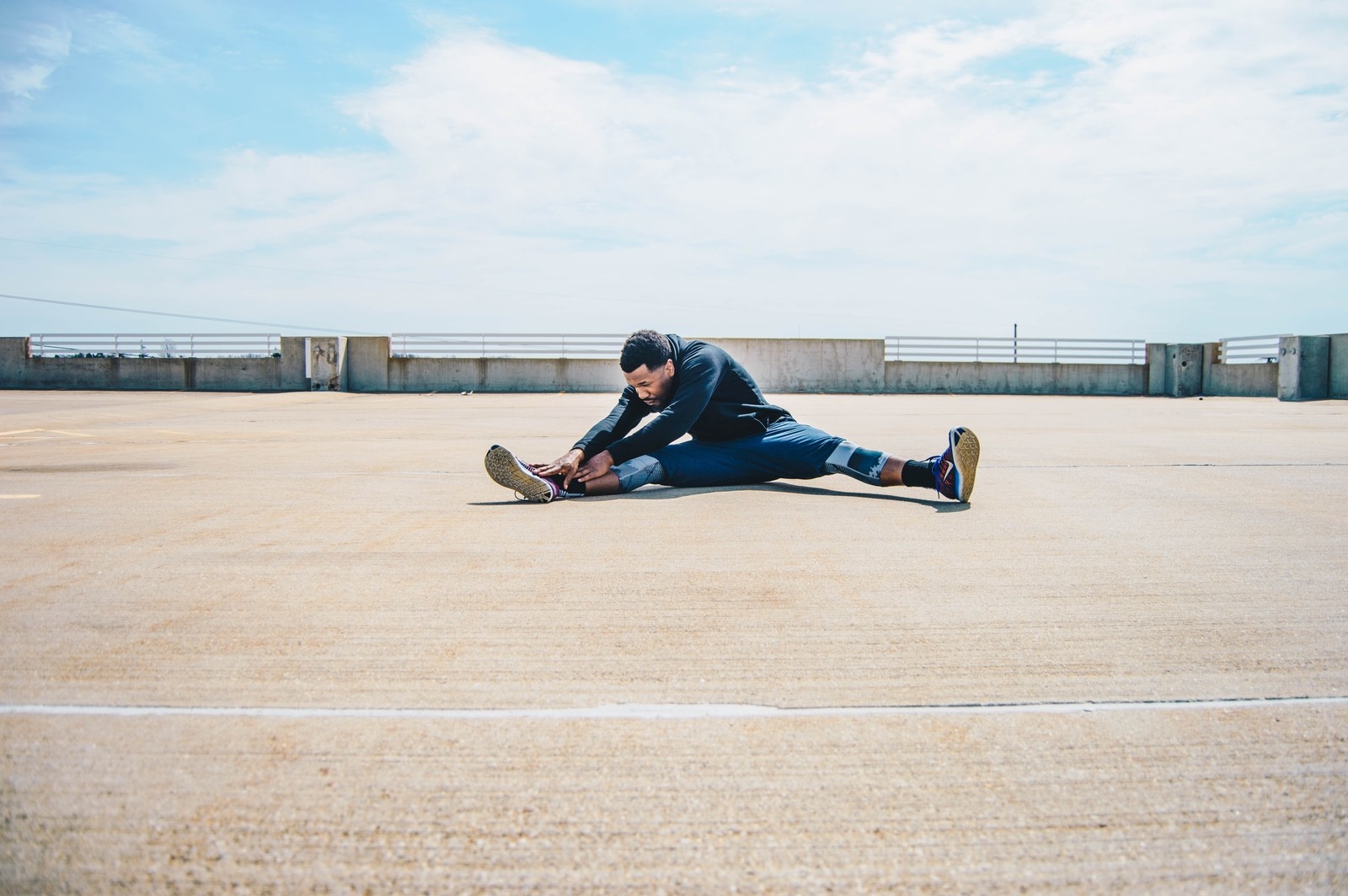Strategies to Take Care of Your Mind + Body: Get Outside
Did you know that 20 minutes a day spent outside can provide some awesome health benefits?
Did you know that 20 minutes a day spent outside can provide some awesome health benefits?
This mindfulness practice includes the defusion technique of imagining an emotion as an object, and a self soothing technique of imagining a healing light addressing that object.
This loving kindness practice involves silently repeating phrases that offer good qualities to oneself and to others.
The Holidays can be a stressful time. Here is a list of 7 things to remember to help with Self-CARE.
One day, I was standing on the back of my pickup truck and throwing away trash at the town dump when I had an experience that’s hard to describe. My head was swimming, my body felt electrified and I felt detached from the world and myself. A memory then trickled in: I was nine years old, being hit repeatedly by my father one evening because he thought I had lost a 25-cent screwdriver. I remember being scared that he was going to kill me. I remember going numb.
Thirty years later, there I stood, scared and numb again—wondering how or what to do to get out of this state, wondering if I would ever “come back.” I was by myself that day, and not only was nobody home, but I had no one to call. None of my friends had the kind of inclination toward giving me the help I needed, and I also wasn’t in therapy at the time. I was stuck—in more ways than one.
It would take me quite a while before I learned how to soothe myself when I wasn’t doing so well. And I’m still not always the best at it. The old phrase of “physician, heal thyself” rings true for me. Being a therapist, I sometimes think, “Jeez, if my clients knew how difficult it is for me to calm myself down sometimes, I’m not sure they’d keep coming to me.”
Therapist or not, learning to self-soothe is hard, but it’s something we all should learn how to do—especially if we have mental health conditions or traumatic pasts. Over the years, I’ve mostly grown past, but I’ve never forgotten, the harshness of my father. That doesn’t mean all my insecurities have gone away, and I don’t expect they ever will; it just means that I’ve concentrated on working toward being independent enough from my experiences. That way, I don’t get so wrapped up in my symptoms of depression and anxiety, and in the fears I still carry around.
Instead of being ruled by these symptoms like I have in the past, I have “worked” psychologically, spiritually and practically to learn and practice the art of self-soothing. I remember when I first started practicing, I latched on to one technique, thinking it would be the answer: breath. I would sit quietly, usually in the morning, and I would breathe in and out, paying attention to the noise of my breath passing through my nostrils. When I became aware of my mind wandering, I would try to refocus. I found this exercise helpful—for a little while.
The sense of peace and calm I once got during the exercise vanished one day, so, I started looking for other ways to self-soothe. This became my pattern. I try a self-soothing exercise, and it either helps me or it doesn’t, then after a stretch of time, I move on to something else.
Over the years, I’ve tried numerous self-soothing techniques. For about a year-and-a-half, I did daily meditations from A Course in Miracles, and once it became too spiritual for me, I stopped. I rode my bicycle for a couple of years. I took up “intentional walking” (a kind of meditation in movement). I tried yoga. I attended spiritual retreats. Jogging was more work than soothing. Walking did not work when I was in my 40s, but was effective in my 50s. Sitting quietly with my legs crossed in meditation was more painful than anything. Qi Gong was not helpful. Tai Chi did not work.
Now, in addition to swimming at the YMCA a few times a week, I meditate while stretching for about 30 minutes in the morning. I also read, at times, from spiritual, poetry or philosophy books, and when I get an “ah-ha” moment, I stop and repeat that saying or sentence or concept throughout the day. I also like to go to the movies and “lose myself” in what’s happening on the screen.
I think one of the most important aspects of self-soothing I’ve discovered is that not every technique works for everyone and it’s unlikely that one technique will be the only technique you ever use. I know that I will likely continue using different techniques, probably for the rest of my life. My initial belief that I would find “one answer” to my anxiety, obsessions and fears was a myth.
I see that a lot in my practice, as well. People want one solution to feel better: one medication, one single action to solve all their problems. The fact is, that’s not how life works. We have to try all kinds of solutions; some will work, some won’t, and some might for a period of time and then stop. Some might not work now, but might later.
That’s a difficult concept to get across to clients and even to myself. I want to feel better right now and forever. But that’s unrealistic. That’s why part of therapy is helping people be realistic in their expectations and to realize that growth, becoming more peaceful and calm as well as happier, is a process that evolves over time. Self-soothing is one of those things as well: It evolves over time. If you’re going to take on learning the art of self-soothing, I have a few pieces of advice.
Too many of my clients hesitate to take time away from our sessions to practice self-soothing. They have convinced themselves there is little value in learning how to calm themselves when actually, self-soothing can help the recovery process immensely. When you are upset or stressed, it is important to know positive ways to cope on your own—that’s a skill important for our individual growth no matter who we are. Finding ways to self-soothe can help you feel at ease when you are dealing with frustration, excitement or having intense emotions. It can also reduce the amount of worry and fear we carry around with us.
You don’t need to be a guru on the mountaintop raking sand to self-soothe “the right way.” A friend once told me she meditates when she irons. Try to think of something simple you do that you can focus on to relax and find some peace of mind, even if just for a short time.
Finding words or phrases that help shift you to a calmer state is like having the right tools for a job. You can find these words, phrases or concepts by reading books or articles or daily meditations, by listening to podcasts or videos, or by making them up yourself. When you find something that makes you feel at ease, stop reading or listening and repeat it a few times to commit it to memory. Repeat the word or phrase periodically throughout the day during stressful and non-stressful times; it will likely bring you a sense of calm.
Self-soothing is like any other exercise. The more we do it, the better we get at it. You don’t practice running for a marathon by only running the marathon. You practice by jogging shorter distances and building up stamina. When we practice self-soothing techniques even when we don’t “need” them, we are building a skill and more of an automatic response for when we do need them.
I have used therapists in the past as coaches, supports and idea-generators. My therapists have given me great insight into the kinds of situations that trigger me, and helped me learn how to manage those triggers. Learning to manage my triggers reduces the need to self-soothe in the first place.
As you begin this adventure, remember to be patient. Self-soothing is a skill that develops over time. I’m still learning. But through my learning, self-soothing has helped me be calmer in my day-to-day interactions with people, and I’ve found that I’m more prepared for experiences like the one I had in the back of that pick-up truck.
Learn how to soothe yourself. It could make a difference in your life. I know it did for me.
Larry Shushansky has helped thousands of individuals, couples and families over 35 years as a counselor and public speaker. He has developed the concept of Independent Enough and shares this when giving talks to businesses, nonprofit organizations and educational institutions. Learn more about him at www.independentenough.com.
https://www.nami.org/Blogs/NAMI-Blog/June-2018/A-Therapist-s-Journey-Learning-the-Art-of-Self-So
Like, on the one hand, they’re obviously well-equipped with the mental health know-how to look after themselves, but on the other, spending all day sitting with people and their mental health problems can’t be easy.
To get some answers, BuzzFeed Health asked 10 therapists what self-care means to them. Here’s what they shared:

“I keep thinking about how different self-care would be depending on what therapist you ask. My coworker who has three children to go home to is going to have a different version of self-care than my coworker who runs her own side business on top of a full-time job. For some, self-care means quality time with family, unwinding from mindless television at the end of a long day, planning vacation times, and participating in social activities outside of work, all offering a different reward.
For myself, I have always found most of my self-care — my refueling — in more introverted activities. I do my best when I get to listen to meditations that ground me on a daily basis, step out into nature, spend time taking care of my own personal to do list, etc.”
—Beth Rue, MSS, LSW, primary therapist at Summit Behavioral Health
“I think a lot of helping professionals find it second-nature to guide and support others on their life journeys while we can easily lose ourselves in the mix. What helps me immediately during and after an emotionally challenging day is to use humor to lighten things up for myself. Sometimes that means cracking jokes with colleagues to lessen the stress felt that day, or having a light-hearted and humorous conversation with someone who ‘gets me’ and my sense of humor, or watching a show or film I know I will get a kick out of to make myself laugh. Laughing out loud is a powerful antidote to emotional distress that always helps me lift my spirit.”
—Gabriela Parra, LCSW, California-based clinical social worker

“Most important to me is being aware of what’s going on for me at any given time. Being honest with myself about where I am emotionally, and what might make me more sensitive or less objective than usual — what might make me not be able to do my best work. I accept that I am human and may have humanly imperfect reactions to things, but I have to stay on top of them to keep them from getting in the way.
I also like to create a buffer between work and home: taking some time after my sessions just to decompress and clear my mind, even if brief, before I immediately sail into Mom/Wife/Friend mode with the people in my life. And of course, above all, I have to keep taking care of myself: practice what I preach in terms of having hobbies, being active, getting outdoor time, prioritizing sleep (this one can be tough!) and staying social with the people whose company I enjoy.”
—Andrea Bonior, PhD, clinical psychologist and author of Psychology: Essential Thinkers, Classic Theories, and How They Inform Your World
“I try to take care of myself physically by going to the gym regularly and exercising. Working out gives me a tremendous boost in how I feel physically and mentally. I also practice what I preach, which is not to compare myself to others. It is important not to project onto other people thoughts that their lives are so much better than my life or that I have am not successful because I have not accomplished what others may have achieved.”
—Marc Romano, PsyD, director of medical services at Delphi Behavioral Health

“Quite similar to self-care for everyone else. A multi-vitamin is incredibly important for self-care for me. Work-wise, mixing my daily tasks with learning and upgrading my skills. Going for an evening walk is really important for me too. I take my child to the park for a run around and then put her in the stroller and do my own walk.”
—Alice Boyes, PhD, former clinical psychologist and author of The Anxiety Toolkit
“A go-to for me in order to decompress and recharge is getting out in nature. Nature-therapy, as I like to call it, allows me to be in the moment, check in with myself, connect with the world around me, and get some much needed fresh air. The benefits of spending time in nature are unbe-leaf-able (!) as it is a proven way to calm the mind and body!”
—Joanna Boyd, MCP, RCC, Vancouver, Canada-based clinical counsellor

“For me, self-care means being fully engaged with a client when we’re together, giving all I can through my attention, care, and planning, and then letting them return to their life when the day is done as I turn my attention back to my own needs. Many years ago I realized that taking my work home stemmed from a lack of trust. I felt I didn’t give enough in the sessions and needed to worry to make up for it. But this wasn’t true. I found that I needed to trust that I’m giving all I can to my clients, trust that they are capable of healthy growth and self-care, and trust in the therapeutic process; that our collaboration is a force for good.
Of course, there are exceptional cases that require work beyond the session, and I often think of my clients when I’m off the clock, but I’m able to enjoy my down time more when I embrace trust. When I have trust in myself, my clients, and therapy, I can pivot to enjoy time with my family, working out, playing in my rock band, and continuing my weekly quest to create the world’s best spaghetti sauce.”
—Ryan Howes, PhD, clinical psychologist and professor at Fuller Graduate School of Psychology
“Much of my self-care involves activities that help me to feel calm, strong, and connected – all important things in my line of work. I spend a lot of quiet time in nature, which helps me to slow things down and calm both my body and my mind. I also really love group fitness classes, which help me to feel strong both inside and out, and ready to support my clients through the most challenging of moments. Perhaps most importantly, I spend time with friends and family, with whom I feel loved and supported. When things become difficult or overwhelming, they help me find perspective, sometimes simply with a much needed laugh.”
—Amanda Zayde, PsyD, New York City-based clinical psychologist

“It’s so important for us to practice what we preach! Namely, having a balanced life that includes time with friends and family, getting a good night’s sleep and eating well, exercising, and doing things just for me (e.g., reading a good summer novel, cheering on my Tennessee Titans games, etc.). It’s also incredibly valuable to have a trusted mentor or two to seek guidance from when things have been particularly stressful.”
—Simon Rego, PsyD, chief psychologist at Montefiore Medical Center/Albert Einstein College of Medicine
“I try to practice exactly what I recommend my clients: at least a few minutes of daily mindfulness practice, a daily gratitude minute, regular exercise (like 4-5 times/week), and time with people. There are so many incredible benefits to learning to enter the moment, turn towards the positive, develop a sense of accomplishment, and experience connections.
People do ask me about the difficulty of sitting with people in pain. Of course I empathize and it is hard to hear about how deeply some of my clients are struggling. That said, I find my job to be an opportunity. I totally believe evidence-based tools can change people’s lives so generally feel lucky and hopeful that people are courageous and that the science of psychology has evolved in a significant way.”
—Jennifer L. Taitz, PsyD, LA-based clinical psychologist
By the way, if you’re feeling curious about therapy yourself, you can learn more about how to start here, since pretty much everyone can benefit from talking to a professional. For more information on free and affordable mental health care options, check out this guide.
By Anna Borges
https://www.buzzfeed.com/annaborges/therapist-self-care?utm_term=.rsy887jd15#.yo5kk1OXvL